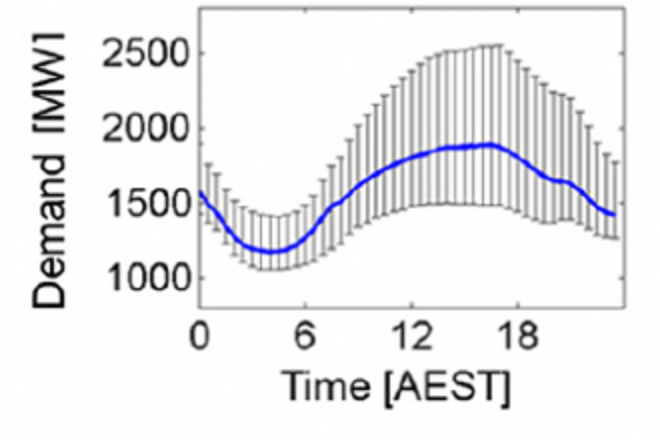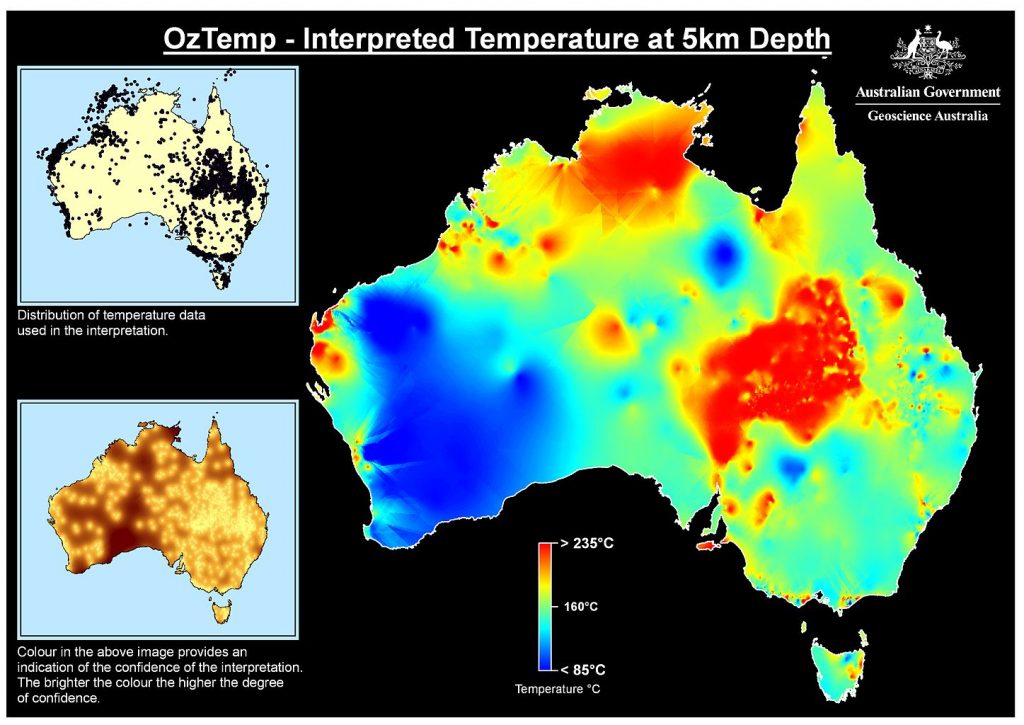AEMO pricing, which is designed to achieve the lowest wholesale price for electricity gives no weight to maintaining baseload capacity and gives no consideration to reducing CO2 emissions. These things could be fixed to the addition of a baseload element to the pricing model.
In doing all of these things, the objective to be kept in mind is an end result of global average temperature stabilising at 1.5C over pre-industrial levels.
AEMO pricing model should give priority to baseload generation
Once the medium term baseload demand has been set, those generators that can provide supply that is not dependent on the wind or sun should not be put out of business just because there is a cheaper option. That is current situation. It has already happened with the Pt. Augusta generators where the Chinese-owned operator has demolished the plant so that it can never be used again, even in a crisis.
Unless a change is made in the AEMO pricing model the grid is in danger of all baseload operators being shut down solely to meet the short-term economics of the current model. In this case, the entire grid will be dependent upon the vagaries of the wind and the cloud cover. Even with storage, this will mean that, at times, there will be virtually no electricity supply at all. This should not be allowed to happen.
Wind and solar cannot provide true baseload capacity. This is because it is dependent upon the prevailing climatic conditions, even with storage. The underlying baseload capacity should not come from natural gas: that power source is better suited to meeting demand peaks and is priced accordingly. Hydro and pumped-hydro should also not count, since that depends upon climatic conditions. That is to say, a long drought can knock out hydro and an extended climate event can knock out pumped-hydro.
In a 1.5C world, true baseload capacity can only come from geothermal or nuclear electricity generation. In the current Australian configuration, it can only come from coal-fired generation. These generators can be phased out as “nearly zero” CO2 generators come on board; until that happens they are needed!
Choosing the level of Baseload Capacity
We can start with the smallest level of demand across the grid. Using South Australia experience (which I examined in an earlier piece), average baseload demand was 2/3rds of average daily demand and minimum baseload daily demand was 45% of peak demand.

On this basis, as a rule of thumb, we could say that baseload demand should be set at 45% of average demand, with renewables and natural gas to compete for supplying the rest of the demand. In the event of climate crisis knocking out renewables, storage can be partly replenished on a daily basis by running any natural gas peaking demand on a 24/7 basis. Added to this, government mandated demand management could be used to help the community to power through such an event.
To make all of this work, Australia needs a “baseload protection plan”. We cannot rely upon current AEMO modelling and pricing to deliver on this without some changes to the model.
Coal-fired Baseload electricity
At present, the only option for baseload electricity is coal-fired electricity, even though to meet the 1.5C objective, it must be progressively phased out. Based on published emission intensity data, in NSW, Liddell should not be included in any “baseload protection plan”; in QLD, Gladstone should not be included; and in Yallourn should not be included. These generators are not needed in a “baseload protection plan.” If these three power stations were taken out of operation, if the remaining operations were guaranteed a market share mandated at 60% of capacity, this would generate enough energy to meet baseload capacity requirements.
Under this plan, 60% of the total 24 hour capacity of the “favoured” generators would be sold into the electricity market at an AEMO calculated cost price plus a risk and profit margin, with a total price of around $A60 MWh. (The current AEMO pricing operation would not apply to this “guaranteed market”; AEMO pricing would apply to all other supply that is not included in the “baseload protection plan.”)
Under this plan, as alternative low-emissions supplies come on stream, these coal-fired generators will begin to lose their guaranteed status, one at a time, until none were included.
Geothermal as a Baseload resource
There have been several abortive attempts to get geothermal up in Australia, with the failure of these projects clearly attributed to economic viability, not on technological grounds. They could not survive under AEMO pricing, despite having the ability to provide electricity at a relatively low cost, assuming that were run 24/7.
European economists have calculated that the wholesale cost of enhanced geothermal electricity is likely to be €50 MWh. This is approximately $A80 MWh. With a small margin for risk and profit, an AEMO fixed price could be $A85 MWh. This compares with the current average price of coal-fired generation of around $A60 MWh. It is trivial for most consumers, being $0.025 per kWh on 45% of the supply, with discounts on various tariffs being as high as $0.23 per kWh. Go figure the angst!
Every MWh of electricity that can be produced on 24/7 by the designated baseload suppliers should have priority in supplying to the grid, with its output being sold at a fixed price before any other electricity generators are able to bid for the remaining electricity demand.
Geothermal should be the first option for Baseload supply and should provide Australia with the mechanism to wind-down the use of coal-fired generators. With Australia’s vast land-mass, it likely that they are many opportunities for geothermal electricity, as the following figure shows.

Nuclear as a Baseload resource
The kind of nuclear that may be acceptable in Australia (using a modular molten-salt reactor) is not yet commercially available. When this kind of reactor has been successfully installed elsewhere, it should be considered here, especially if geothermal does not prove to be a satisfactory solution.
Baseload and Storage
Setting up a “baseload protection plan” doesn’t of itself normally require storage, since this supply is planned to be always available, with the quantum being pitched at the lowest level of demand over a weekly cycle. However, there is a good possibility that, when coal-fired electricity has ended and geothermal and nuclear supply have taken over, there will be occasions when supply will be greater than demand at a particular moment in the cycle. To cover these occasions, rather than curtailing production, it would be preferable if the surplus electricity were stored in a large-scale facility, like Snowy 2.0 pumped-hydro. In this situation it could be sold to that facility at a very low price, such as $A5 MWh, thus providing a negative incentive to owners of the baseload power not to provide more baseload power than is required.
It is recognised that storage is needed to handle the daily and weekly cycles of demand. This disconnect between demand and supply is a natural functions of drawing much of the supply from intermittent renewables. Ironically, the 6 pm peak demand arrives at the very time that solar-generation is quite weak, even on a cloud-free day in Australia.
In addition, a case can be made for some level of natural gas peaking demand, for something like one hour a day. Such a facility could be run 24/7 during any climate event that stops renewables producing electricity, which would reduce the severity of such a crisis in terms of electricity production.
In the normal event, storage from liquid air and batteries can probably handle the week-day cycles, with Snowy 2.0 taking up the surplus supply over the weekend.
Conclusion
Our collective objective should be to manage our use of fossil fuels so that global average temperature stabilises at 1.5C over pre-industrial levels.
The changes suggested here can be undertaken almost immediately and will measurably contribute meeting expectations that Australia’s fossil fuel usage can be drastically cut. (Ethanol for oil is the other limb to this strategy.)
However, to successfully navigate a change of this size, it is necessary to change the AEMO pricing structure to protect coal-fired baseload capacity and to ensure that baseload power in the future is not undermined by aggressive pricing and lobbying on behalf of the operators and owners of wind and solar assets.
